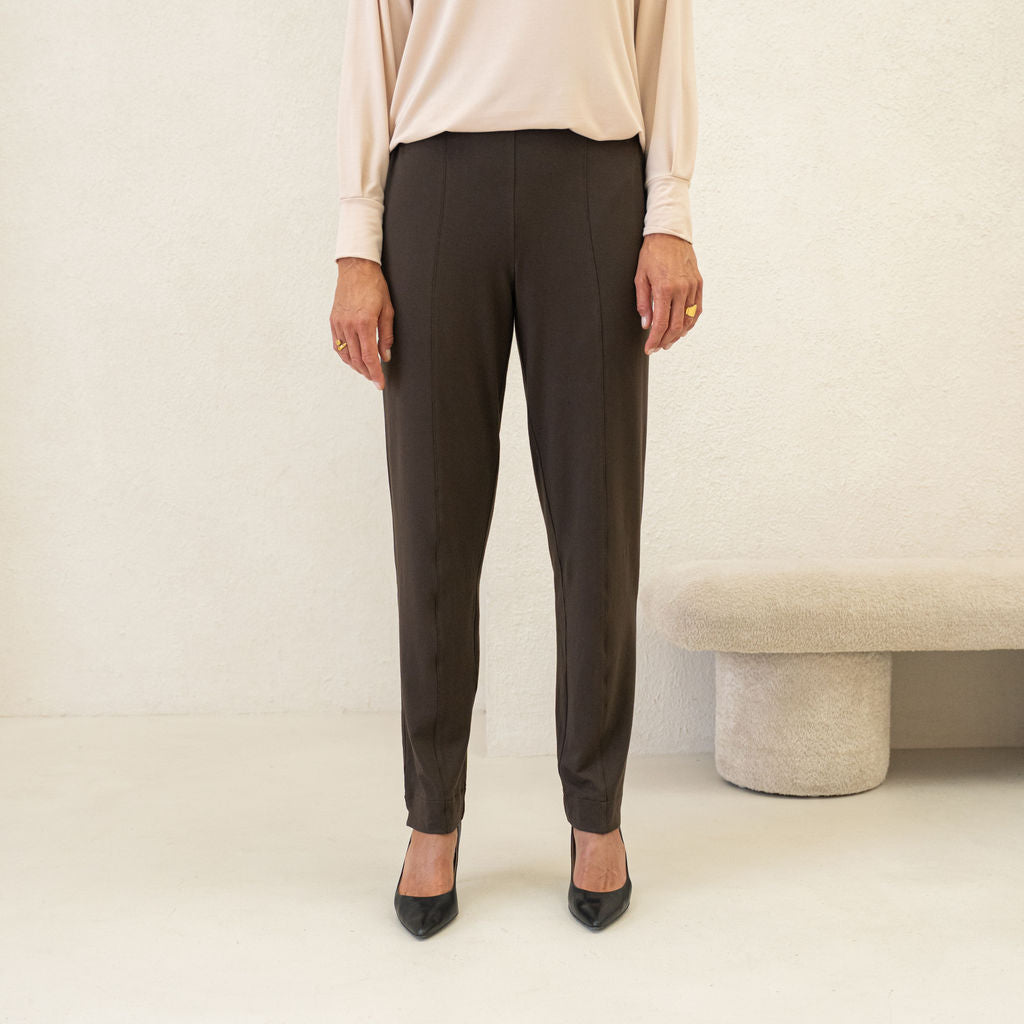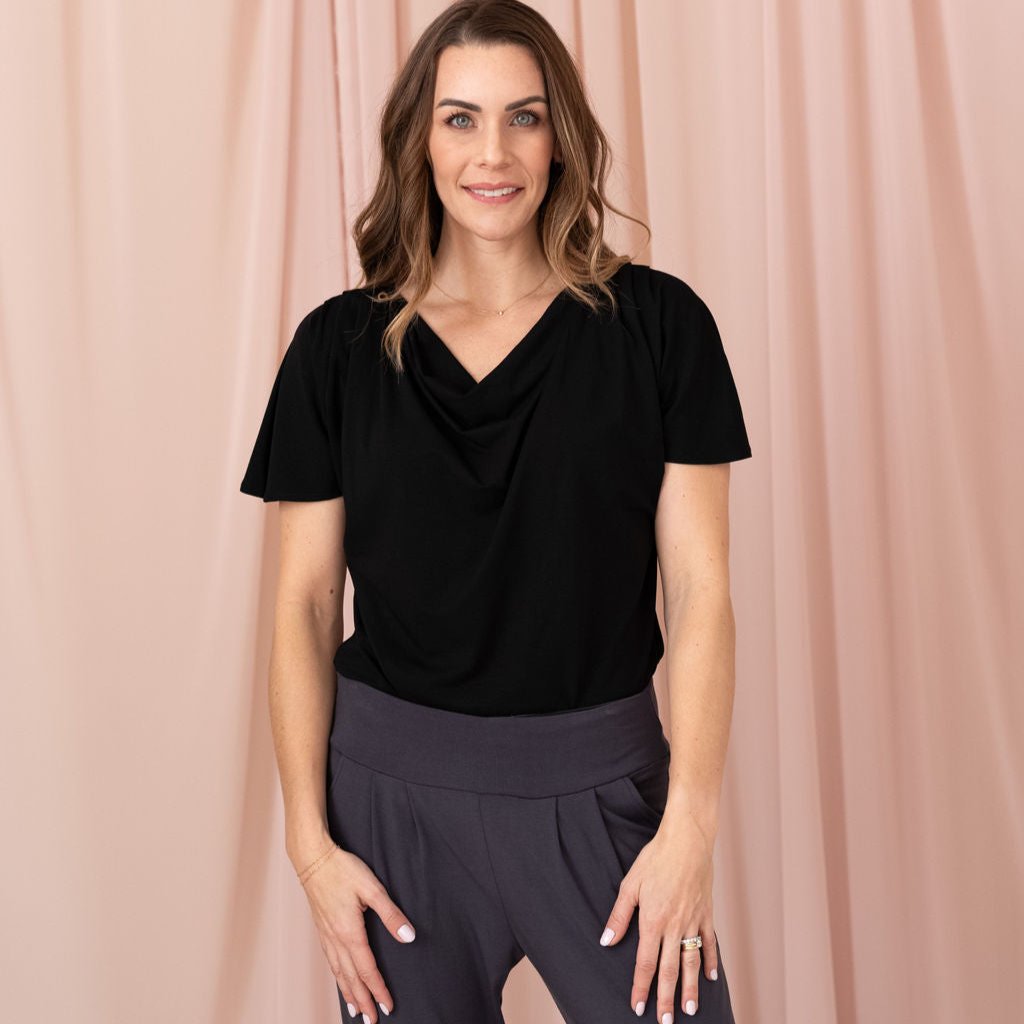What Is Sustainable Fashion?
Sustainable fashion refers to the practice of designing, producing, and distributing clothing in ways that minimize environmental impact, promote fair labor standards, and prioritize reusability and recycling while creating high-quality, durable products that are intended to be used and loved for a long time.
How Does Sustainable Fashion Help The Environment?
Sustainable fashion helps the environment by reducing waste, lowering carbon emissions, and conserving natural resources. It encourages responsible sourcing of materials, and efficient manufacturing processes, and promotes the reuse and recycling of products, all contributing to less pollution and a reduced ecological footprint.
How Does Sustainable Fashion Impact The Economy?
Sustainable fashion can boost the economy by creating jobs in eco-friendly manufacturing processes, promoting local artisans and suppliers, and stimulating consumer spending on sustainable brands. It also helps mitigate environmental costs associated with pollution and waste management, which can have long-term economic benefits.
What Role Does Recycling Play In Sustainable Fashion?
Recycling plays a crucial role in a sustainable fashion by reducing waste and resource use. It involves repurposing or transforming discarded clothing or textiles into new products, thus extending their lifecycle, reducing landfill, and conserving natural resources such as water and energy typically used in production.
What Is The Difference Between Ethical And Sustainable Fashion?
Ethical fashion focuses on fair labor practices and humane treatment of workers, while sustainable fashion emphasizes minimizing environmental impact through resource use, waste reduction, and recycling. Both aspects are critical for a holistic approach to responsible fashion, but they address different elements of the production process.
How Are Sustainable Fabrics Different From Regular Fabrics?
Sustainable fabrics differ from regular fabrics by their environmental impact during production and lifetime. They're typically made from renewable, organic resources, or recycled materials, require less water and energy to produce, are often biodegradable, and involve fewer harmful chemicals, minimizing pollution and conserving natural resources.
What Is A Sustainable Supply Chain In The Fashion Industry?
A sustainable supply chain in the fashion industry refers to the management of resources and processes involved in the creation, distribution, and disposal of fashion items, prioritizing environmental stewardship, social responsibility, and economic viability, from sourcing raw materials to production, transportation, use, and end-of-life cycle.
What Is Sustainable Clothing In Women's Fashion?
Sustainable clothing in women's fashion refers to garments that are designed, produced, and consumed in an environmentally and socially responsible manner. It involves using eco-friendly materials, minimizing waste and pollution, promoting fair labor practices, and supporting ethical supply chains throughout the entire lifecycle of the clothing item.
How Can I Participate In Sustainable Fashion As A Consumer?
As a consumer, you can participate in a sustainable fashion by making conscious choices. Opt for secondhand or vintage clothing, support ethical and eco-friendly brands, and prioritize quality over quantity. Extend the life of your clothes through proper care and repair. Reduce, reuse, and recycle fashion items to minimize waste.
Why Should I Choose Sustainable Clothing Over Fast Fashion?
Choosing sustainable clothing over fast fashion is beneficial for several reasons. Sustainable clothing promotes environmental conservation, reduces waste and pollution, supports ethical labor practices, and ensures better quality and durability. It also encourages a shift towards a more conscious and responsible fashion industry that values longevity, transparency, and social responsibility.
How Is Sustainable Clothing Better For The Environment?
Sustainable clothing is better for the environment as it utilizes eco-friendly materials, reduces resource consumption, minimizes pollution, and promotes circularity. It avoids harmful chemicals, embraces organic or recycled fibers, and adopts eco-conscious manufacturing processes, leading to reduced carbon emissions and a smaller ecological footprint compared to conventional fashion.
Are Sustainable Clothing Options More Expensive?
While sustainable clothing can carry a higher upfront cost due to ethical production methods and quality materials, it often provides longer-lasting wear, creating value over time. However, prices vary widely, and affordable sustainable options are increasingly available, challenging the notion that eco-friendly fashion is always more expensive.
How To Identify If A Brand Is Truly Sustainable?
To identify if a brand is truly sustainable, look for key indicators such as certifications from recognized organizations, transparent supply chain information, eco-friendly materials, ethical labor practices, commitment to reducing environmental impact, and engagement in initiatives for social responsibility. Researching brand values, certifications, and customer reviews can provide valuable insights.
Can Sustainable Clothing Be Both Stylish And Eco-friendly?
Yes, sustainable clothing can be both stylish and eco-friendly. With advances in design and technology, sustainable fashion brands are creating stylish garments using eco-friendly materials, ethical production practices, and innovative recycling methods. These brands prioritize aesthetics without compromising on their commitment to reducing environmental impact, offering consumers fashionable and sustainable options.
What Materials Are Commonly Used In Sustainable Clothing?
Sustainable clothing often uses materials like organic cotton, hemp, bamboo, and recycled fabrics such as polyester and nylon. Tencel and modal, made from sustainably-sourced wood pulp, are also popular. These materials reduce environmental impact through less water usage, fewer chemicals, and improved biodegradability compared to conventional fabrics.
Does Washing Sustainable Clothing Differ From Regular Clothing?
Washing sustainable clothing does not significantly differ from regular clothing. Both types require proper care to prolong their lifespan. However, sustainable clothing is often made from eco-friendly materials, such as organic cotton or recycled fibers, and may benefit from using mild detergents, lower wash temperatures, and air drying to minimize environmental impact.
How Can a Capsule Wardrobe Contribute to Sustainable Living?
A capsule wardrobe promotes sustainable living by reducing fashion consumption and waste. By focusing on a small selection of versatile and timeless pieces, individuals can minimize the need for excessive shopping and fast fashion purchases. This approach encourages mindful consumption, longevity of clothing items, and a reduced environmental impact.
How Is Modal Fabric Produced?
Modal fabric is produced through modal spinning. It begins with the extraction of cellulose from beechwood trees. The cellulose is dissolved into a liquid form and then extruded into fibers, which are spun into yarn. The resulting yarn is then woven or knitted into modal fabric, known for its softness and moisture-wicking properties.
Is Modal Clothing Eco-Friendly?
Modal clothing is generally considered eco-friendly. Modal is a type of rayon made from sustainably sourced beech trees, using a closed-loop production process that minimizes waste and chemicals. It requires less water and energy compared to conventional fabrics. However, the overall sustainability of modal clothing also depends on other factors like dyeing and manufacturing processes.
How Does Modal Clothing Feel Against The Skin?
Modal clothing feels incredibly soft and smooth against the skin. Its natural fibers provide a luxurious sensation, similar to silk or cashmere. The fabric's breathability and moisture-wicking properties also contribute to a comfortable and cozy experience, making it a popular choice for those seeking a gentle and pleasant touch on their skin.
Does Modal Fabric Shrink When Washed?
Modal fabric is known for its excellent stability and resistance to shrinking. However, like any fabric, it may experience minimal shrinkage if subjected to extreme heat or improper washing conditions. To maintain its original size and shape, it is recommended to follow the care instructions provided by the manufacturer.
How Is Modal Fabric Different From Cotton?
Modal fabric differs from cotton in several ways. Modal is made from cellulose derived from beech trees, while cotton is derived from the cotton plant. Modal is known for its softness, smoothness, and breathability, surpassing cotton in these aspects. Additionally, modal has better moisture-wicking properties and is less prone to wrinkles compared to cotton.
Is Modal Fabric Good For Sensitive Skin?
Yes, modal fabric is generally considered good for sensitive skin. It is renowned for its softness, breathability, and hypoallergenic properties. Modal is derived from natural materials, such as beech trees, and is known to be gentle and non-irritating to the skin. However, individual sensitivities may vary, so it's always best to test it personally.
What Is Ethical Women's Clothing?
Ethical women's clothing refers to garments produced with social and environmental responsibility in mind. This includes using sustainable materials, fair labor practices, and cruelty-free methods. It emphasizes the well-being of workers, animals, and the planet, aligning fashion choices with values of justice, compassion, and environmental stewardship.
How Does Ethical Clothing Impact The Environment?
Ethical clothing minimizes environmental harm by promoting sustainable materials, fair labor practices, and reduced waste. It reduces water and energy consumption, limits pollution, and supports biodiversity. By choosing ethically produced garments, consumers contribute to a greener fashion industry that prioritizes both people and the planet.
How Is Ethical Women's Clothing Produced?
Ethical women's clothing is produced through sustainable practices. This involves using eco-friendly materials, fair labor, and safe working conditions. Brands prioritize transparency, traceability, and minimal environmental impact. They often support local communities and aim for long-lasting, quality pieces, promoting conscious consumption and social responsibility in the fashion industry.
Why Should I Choose Ethical Clothing Brands?
Choosing ethical clothing brands promotes social responsibility by ensuring fair labor practices and environmental sustainability. It supports workers' rights, reduces negative environmental impacts, and fosters a conscious consumer culture. By choosing ethical brands, you align your purchases with values that prioritize human dignity and the well-being of our planet.
How Can I Ensure If A Brand Is Ethically Produced?
To ensure a brand is ethically produced, research its manufacturing processes and sourcing methods. Look for certifications like Fair Trade or B Corp. Check for transparent business practices on the company's website or third-party sites that evaluate ethical production. Engaging with customer reviews and the company's mission statement can also provide insight.
Is Ethical Clothing More Expensive Than Regular Clothing?
Not necessarily. Ethical clothing can vary in price, but factors like sustainable materials and fair labor can contribute to higher costs. However, some brands focus on affordability while maintaining ethical practices. Prices depend on brand, production methods, and materials, making ethical options competitive with regular clothing.
Does Ethical Clothing Last Longer?
Yes, ethical clothing often lasts longer. It's typically made from higher-quality materials and constructed with greater care, aligning with sustainable and responsible practices. Investing in ethical clothing supports environmental protection and fair labor, and these garments usually demonstrate enhanced durability compared to mass-produced alternatives, making them a lasting choice.





